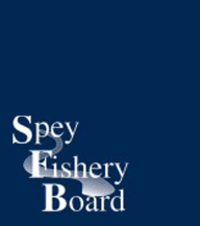Many thanks to Strathspey Estate for facilitating this camera's location and to the
Spey Fishery Board for capitally funding its installation. Strathspey Estate offers a rich variety of field sports including Salmon fishing on the River Spey. The River Spey is widely recognized as one of Scotland's premier salmon rivers. Downstream from Grantown on Spey, at Castle Grant Water, the Estate boasts three exceptional salmon beats on the river, encompassing a total of 29 named pools. As Scotland's second longest river and known for its rapid flow, the River Spey holds great significance for salmon fishing and whisky production.Flowing northeast, the river accumulates numerous tributaries from the Corrieyarack, Sherramore, and Glenshirra Forests after departing from Loch Spey. The Markie Burn, descending from Glen Markie to the north, is the first substantial tributary, joining the waters of the Spey behind the Spey Dam. Continuing downstream for about a mile, the River Mashie enters from Strath Mashie in the south.A couple of miles above Newtonmore, the River Truim joins the right bank, followed by the Highland Calder from Glen Banchor on the left bank at Spey Bridge in Newtonmore. At Kingussie, the River Gynack converges with the Spey on its left bank, having traversed the town. Approximately 1.5 miles downstream, the River Tromie enters from the right bank. The notable River Feshie joins on the right bank at Kincraig, while the River Druie does the same at Aviemore. Several miles further downstream, the River Nethy joins from the east near Nethy Bridge, and the River Dulnain originating in the Monadhliath Mountains contributes a substantial flow from the west near Dulnain Bridge.
Between Grantown-on-Spey and Craigellachie, the Burn of Tulchan and Allt a Gheallaidh converge from the west, while the River Avon, the most significant tributary of the Spey, joins from the east. Near Knockando, the Allt Arder and Knockando Burn also merge from the west. The River Fiddich enters from the right at Craigellachie, and the Burn of Rothes enters from the left at Rothes. Downstream, additional burns join the Spey, with notable ones including the Burn of Mulben, Red Burn, and Burn of Fochabers.







